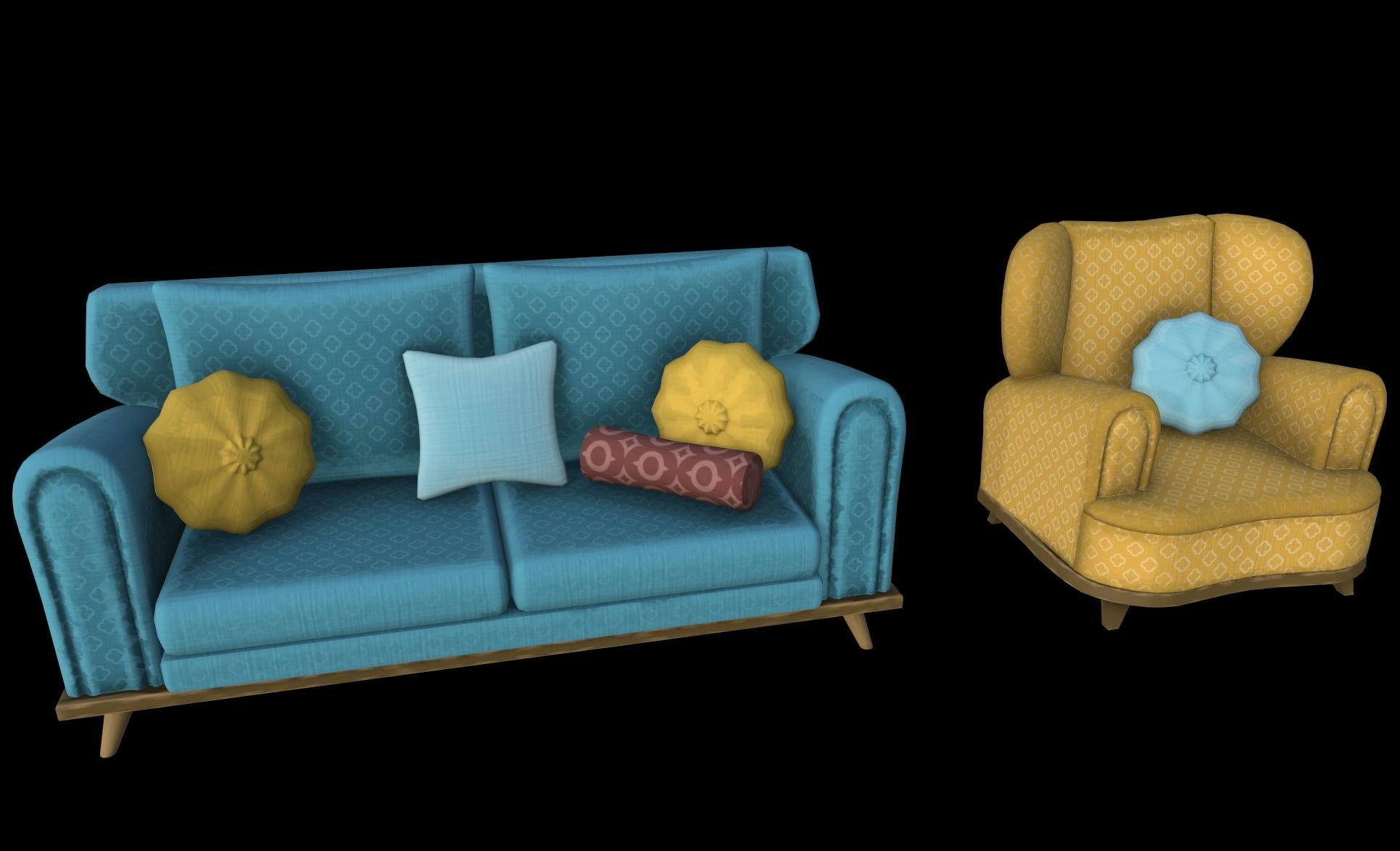The Kraken Wakes is a globe-trotting game. Since production started, I’ve built fishing boats on the Pacific, boxy London offices, a tropical beach and a section of the Thames bank. My favourite location to build was Mike and Phyllis’s cosy rural retreat, Cornwall Cottage. Left to Phyllis by an aunt, the cottage is cute, coastal, and charmingly old-fashioned. The player visits it several times during the game, as a place of celebration and a place of safety. Let’s look at how Cornwall Cottage came to life.
Like all of the locations in The Kraken Wakes, Cornwall Cottage began with a brief from narrative designer Rianna, along with a few initial reference images. The player would be spending time inside and outside the cottage, so we needed an interior and an exterior set, complete with cottage garden. The cottage itself needed to be small, with an open-plan, fairly minimalist kitchen area, and slightly dated decor. On the outside, next to the front door of the cottage, there was to be a plaque that read “Rose Cottage” (the actual name of Mike and Phyllis’s house). However, as roses struggle with English coastal weather, there wasn’t to be an actual rose in sight.
I start working on a location after a briefing with our art director Tom. In his own post a couple of weeks ago, Tom described how he blocks out an environment to establish the basic shape and layout before it gets handed over to me. We go through this block out in our briefing, as well as discussing assets and the general tone of the environment. I also get a detailed asset list to work from, and a floorplan to help me with the layout. Here are the Cornwall Cottage exterior and interior floorplans:
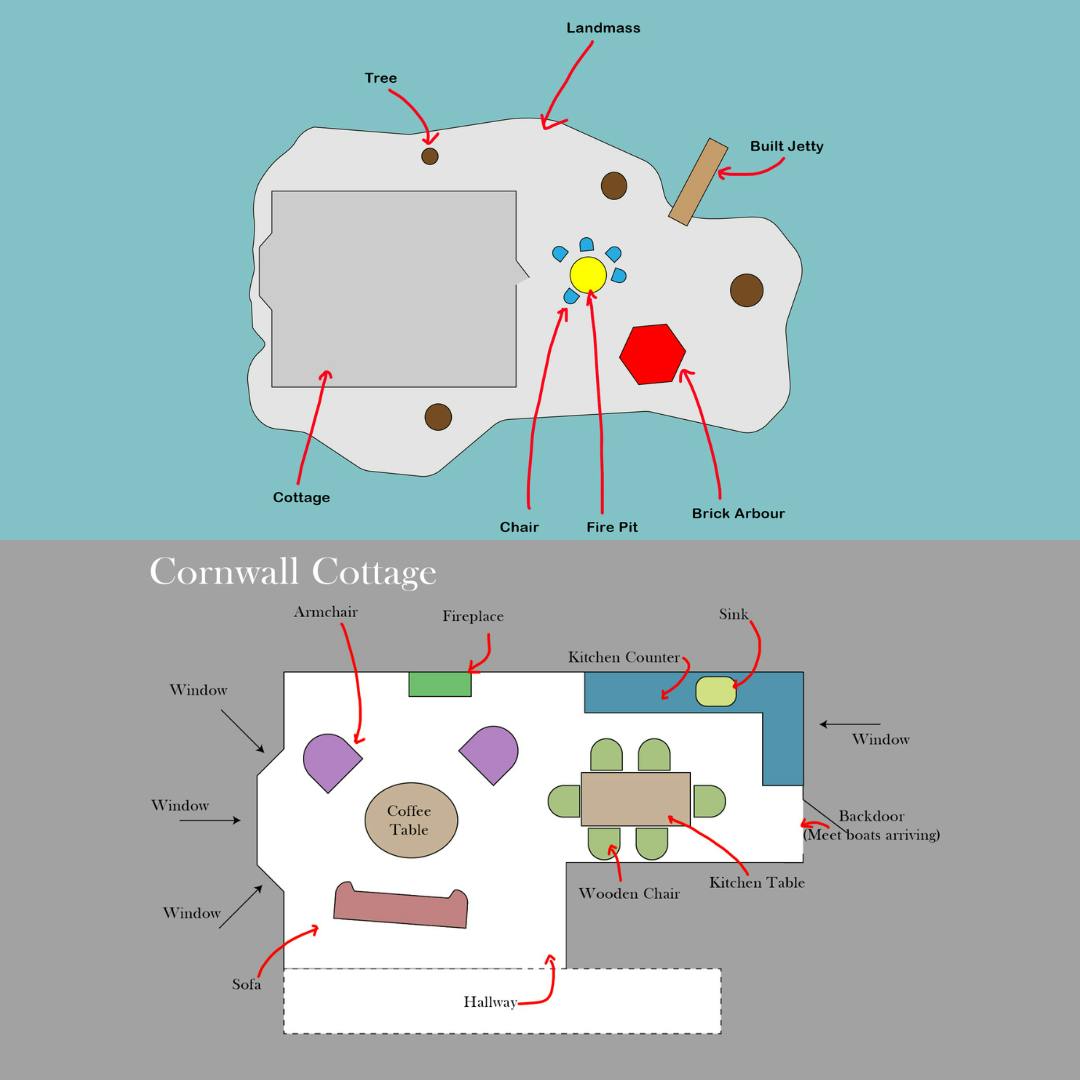
From there, I spend some time looking for images for reference and inspiration – which, in the case of Cornwall Cottage, meant lots of adorable house-hunting. I use an app called PureRef to create moodboards:
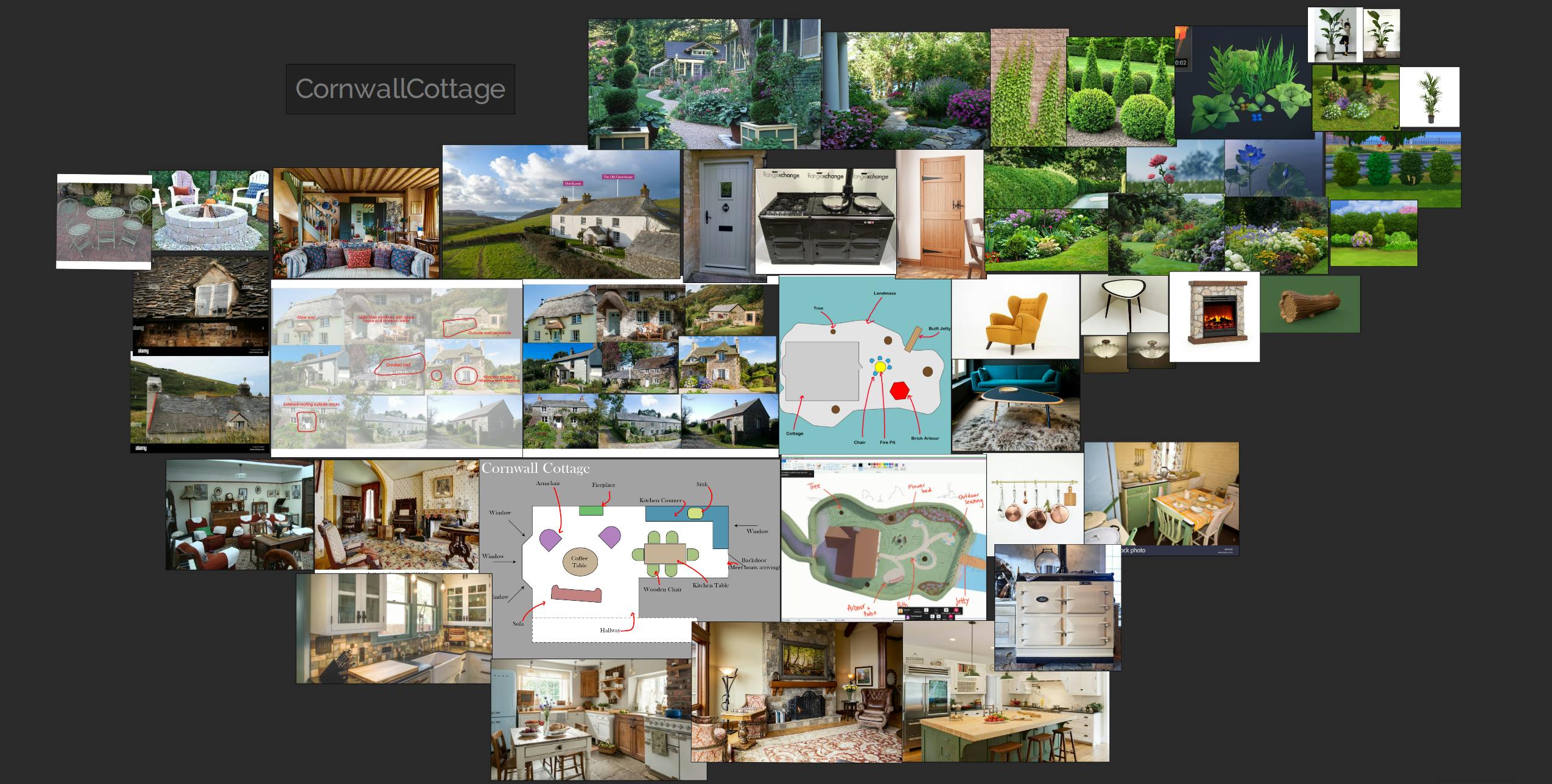
When it comes to building an environment, I usually start with the more impactful assets. In the case of Cornwall Cottage, this meant focusing on the interior layout, and the exterior assets. I spent a lot of time making meshes and materials, and tweaking back and forth between Substance Painter and Unreal until I found something I was happy with. Here are some images of the interior of the cottage almost complete (at this point I still hadn’t added a texture for the ceiling).
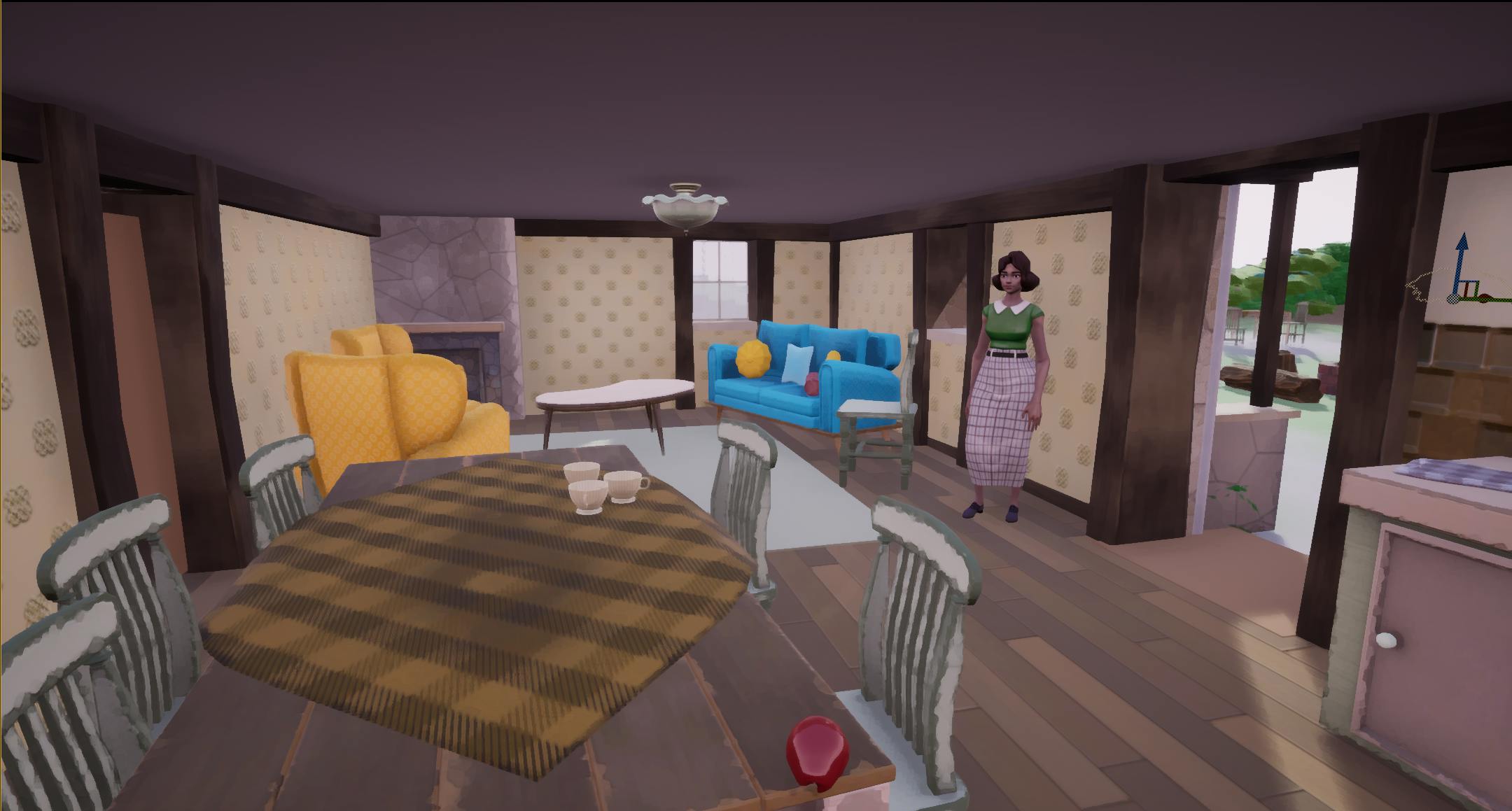
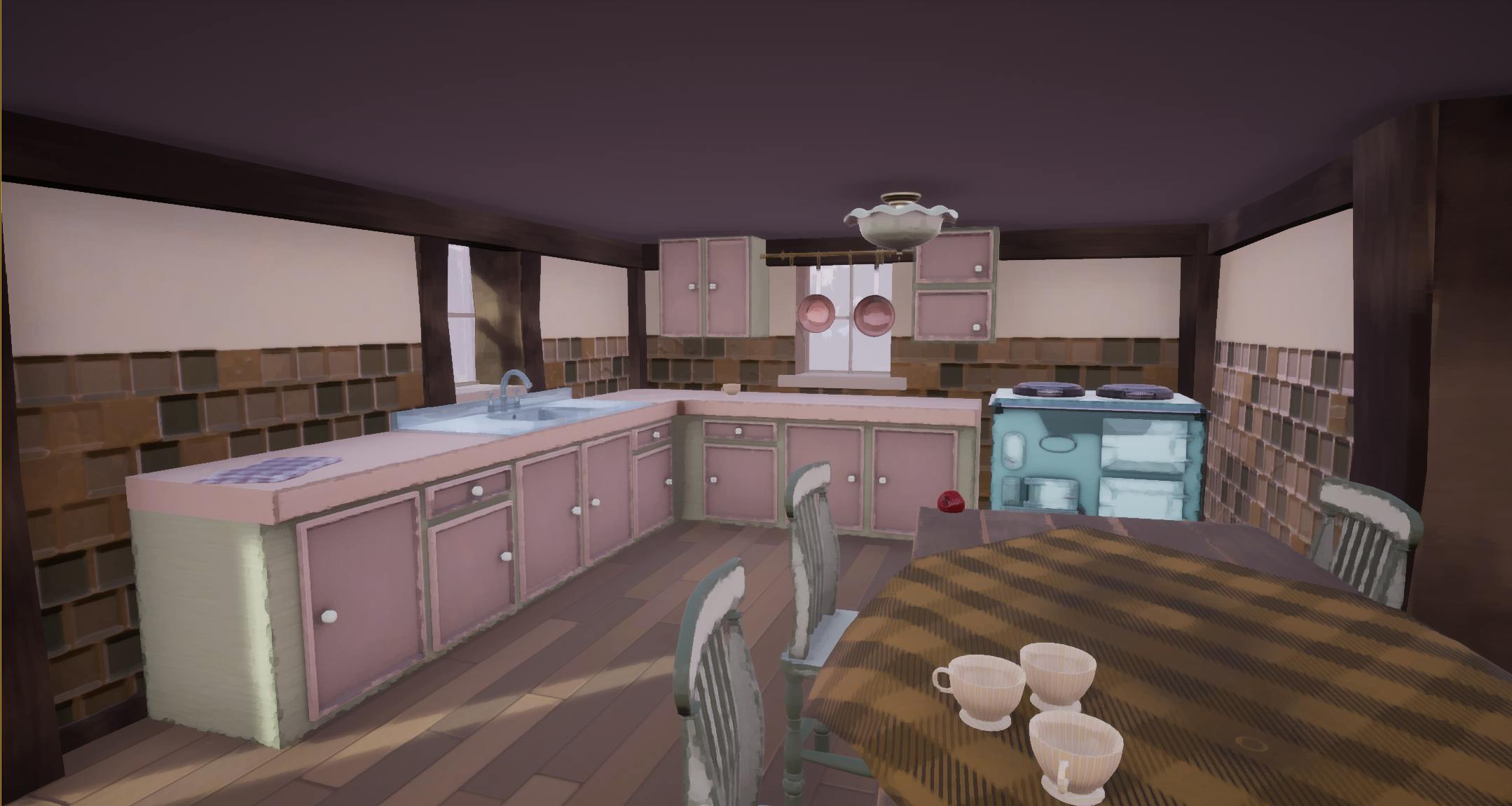
Next, I tend to focus on landscaping and exterior materials. Building the Cornwall Cottage environment involved a surprising amount of gardening – making leaves, trees, flowers and other plants to populate the outdoor environment. Since I first built the Cornwall Cottage environment, I’ve been honing my tree workflow. Here are a few images from different stages of the process:

Some early garden assets at different stages of completion.
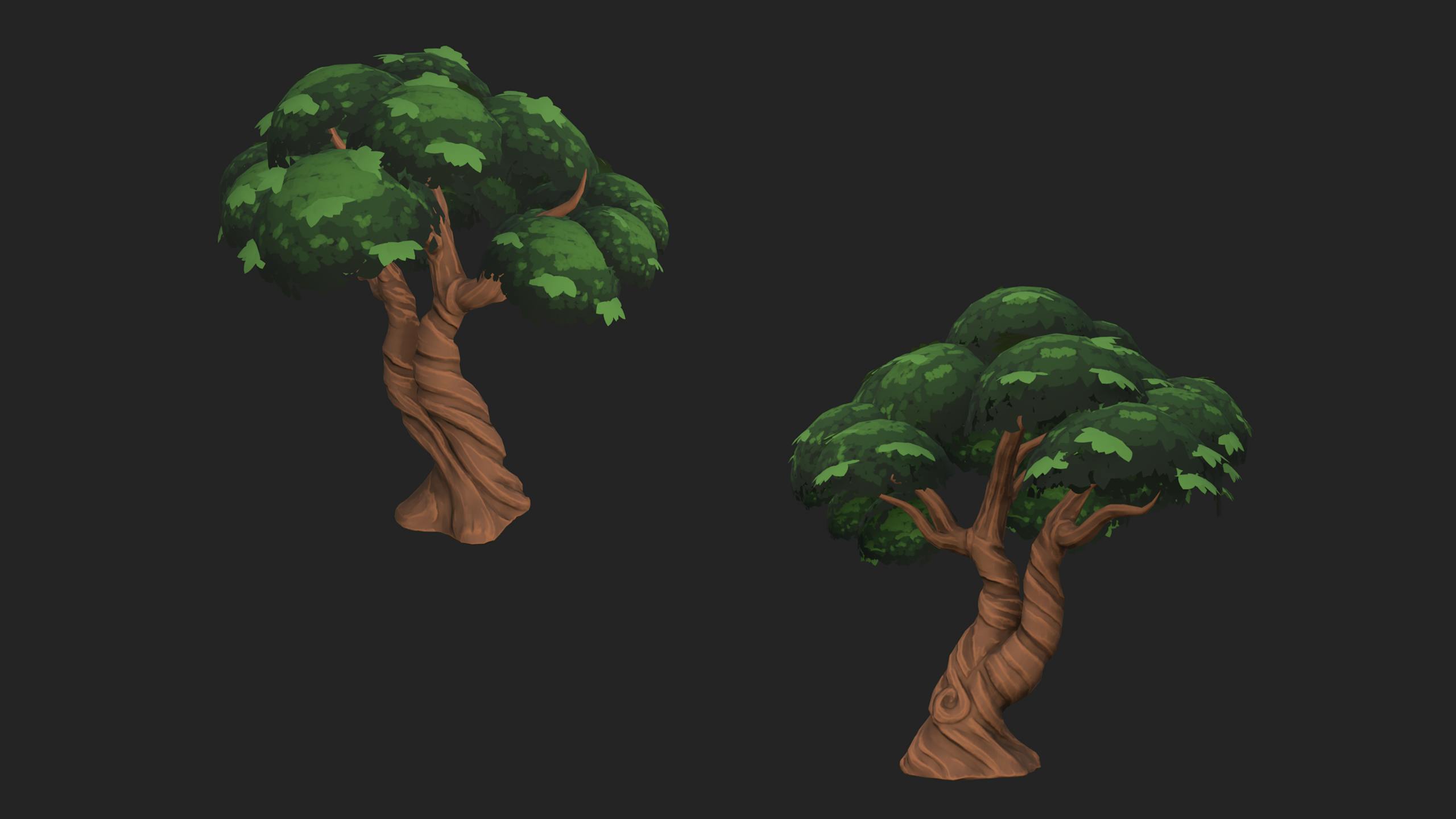
Tree assets created more recently, after some changes to the tree workflow.
Sometimes, I notice that there are assets that aren’t working together, or materials that look different between Substance Painter and Unreal, so it takes a bit of trial and error to get all aspects of the environment matching up. Once I’ve got the main focus assets looking right, it’s much easier to create and add in the smaller, more detailed assets that add an extra layer of realism to the setting. These details are usually decided between me, Rianna and Tom, but everyone in the development team tends to pitch in with suggestions to really bring the environments to life.
I’ll end on a couple of interior design goals from Cornwall Cottage: a colour co-ordinated, vintage living room suite, and an aga!
